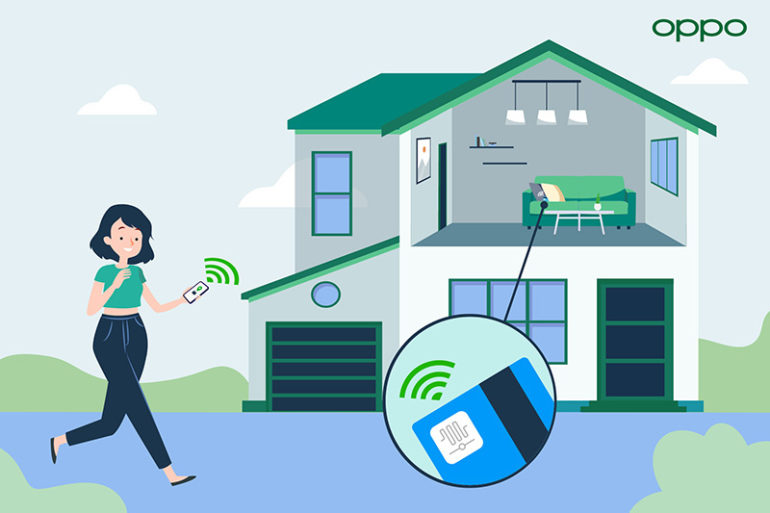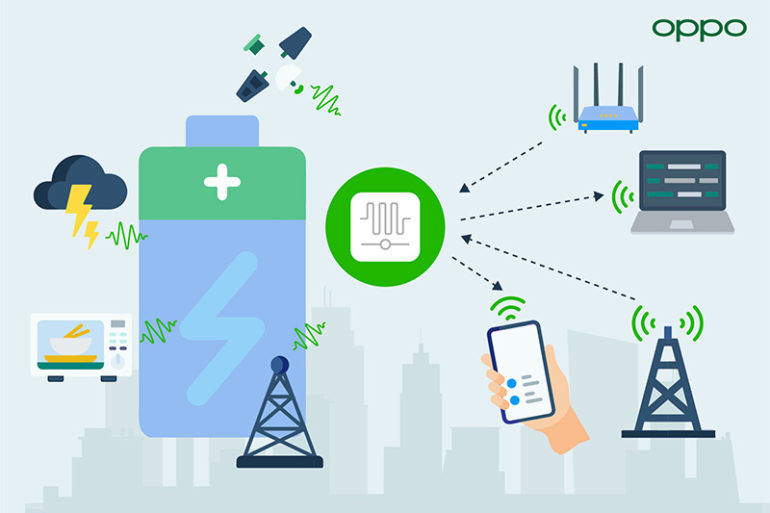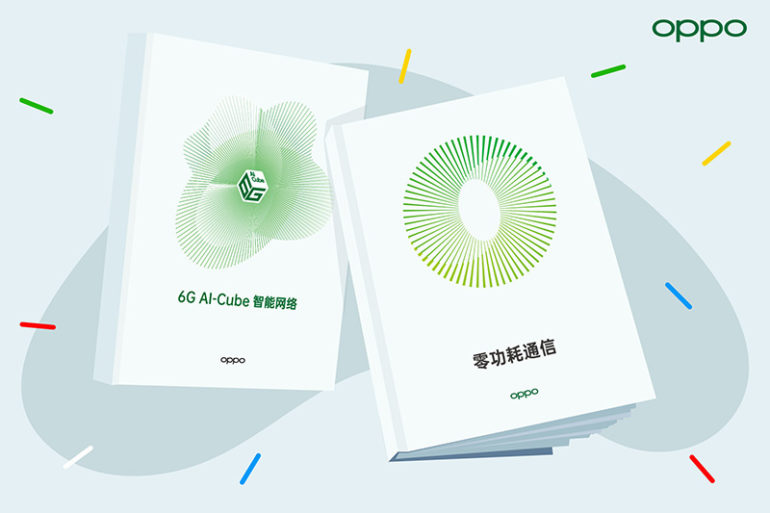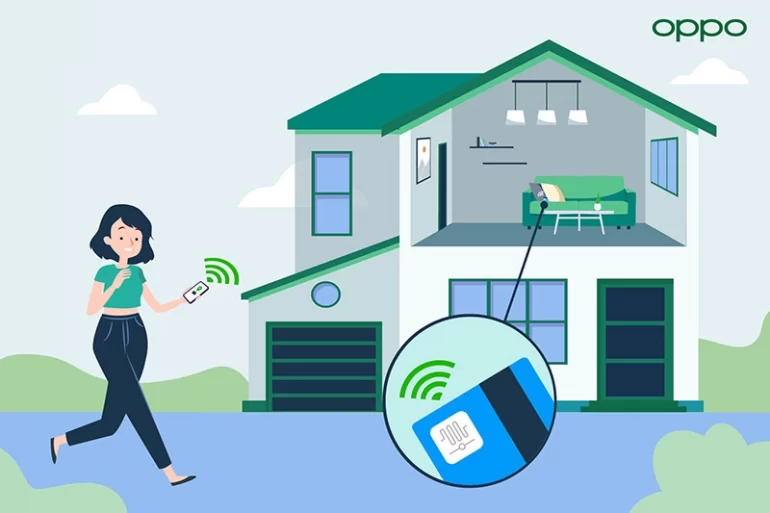OPPO has just revealed that it is working with partners to make Zero-Power Communications devices as a part of next-generation communications technologies.

The company examines the technical positioning of Zero-Power Communication technology in the context of current unmet demand in the IoT space while outlining a roadmap.
The current majority of portable electronic devices rely on batteries as their power source. Zero-Power Communication technology avoids the need for batteries by harvesting ambient radio frequency energy including TV towers, FM towers, cellular base stations, and WiFi access points.

This is then used to generate power, resulting in highly compact, efficient, and low-cost devices. This benefits commercial applications like warehousing, logistics, and agriculture. Additionally, it will include wearable devices, smart homes, to name a few.
“From the first to the fourth generations of mobile telecommunications technology, the telecommunications industry has gone through four technological leaps — from analog to digital, to data, and finally to broadband. Each of these leaps has been designed to deliver faster data transmission rates; however, over the next decade, looking at 5G technology, we believe that technology should evolve to deliver greater convenience and sustainable value for society as a whole. Zero-Power Communications technology offers a means for electronics manufacturers to remove batteries from their products, reducing their costs and environmental impact in the process. As such, Zero-Power Communications is one of our core focus areas as we move into the B5G/6G generation.”
Henry Tang, OPPO’s Chief 5G Scientist.
The technology can be constructed in a framework that uses cellular communications, sidelink communications, or both. Cellular-based Zero-Power Communications systems are best able to support industrial sensor network applications.

Examples of these include applications where the devices may need to be deployed in extreme environments, where the number of devices in a network is large, or where the deployment and maintenance costs of using traditional active devices are high.
A hybrid approach using both cellular and sidelink communication methods will further allow developers to unlock more applications using the new technology.
OPPO has already successfully built its own Zero-Power Communication system. It demonstrated the feasibility of the concept as a viable approach to future communication networks. Additionally, the company is taking the lead in promoting the Zero-Power Communication standard, including proposing Zero-Power Communication research projects to 3GPP. Then, the company presents its findings during industry conferences like FuTURE and ICCC.
As the industry moves towards 6G technology, OPPO believes that Zero-Power Communication will work with other core technologies such as Reconfigurable Intelligent Surfaces, Symbiotic Radio, Non-Orthogonal Multiple Access (NOMA), and AI to unleash the full potential of 6G.
Before the Zero-Power Communication White Paper, OPPO published its 6G AI-Cube Intelligent Networking White Paper in its continued research into cutting-edge communication technologies.

OPPO is targeting to release commercial Zero-Power Communication technology within the next 3 to 5 years as it continues to build smarter, more convenient, and greener communications systems.
Ram found his love and appreciation for writing in 2015 having started in the gaming and esports sphere for GG Network. He would then transition to focus more on the world of tech which has also began his journey into learning more about this world. That said though, he still has the mentality of "as long as it works" for his personal gadgets.






